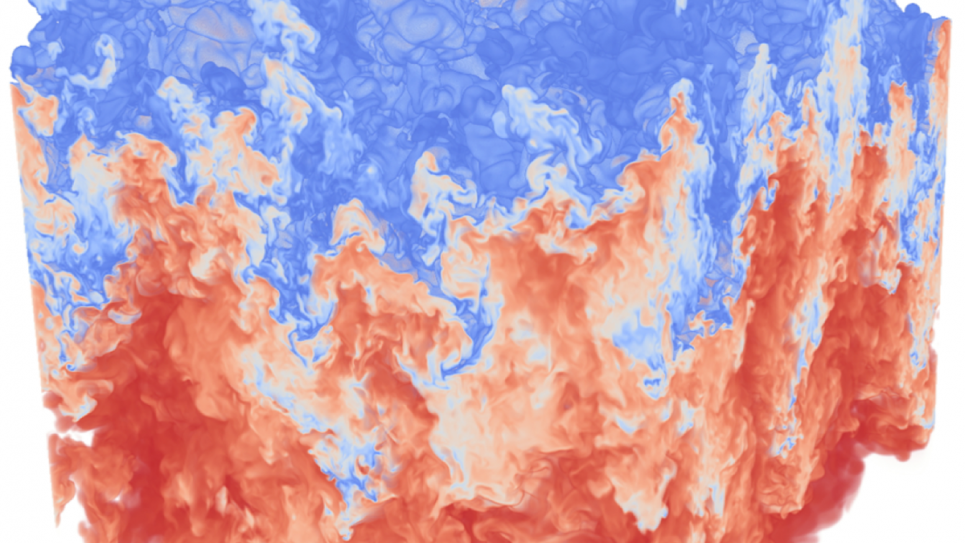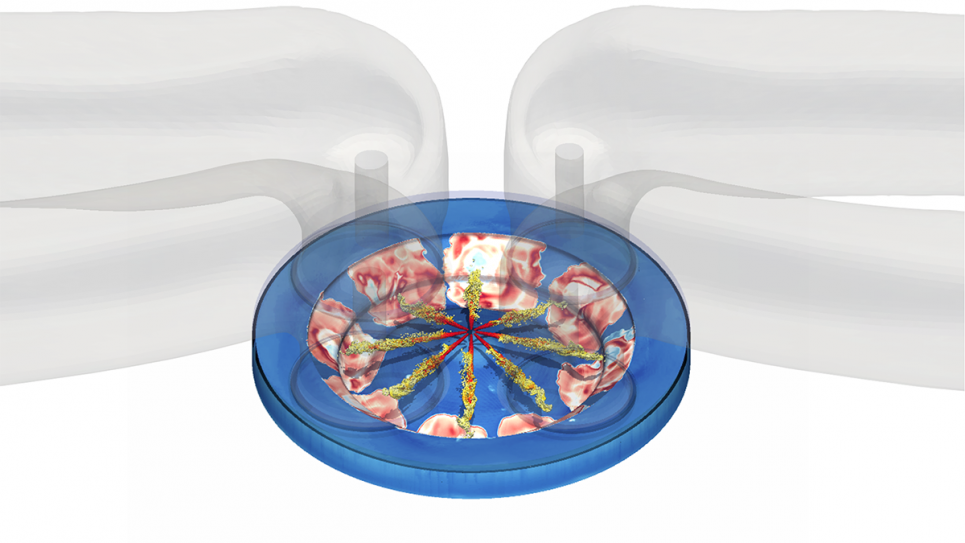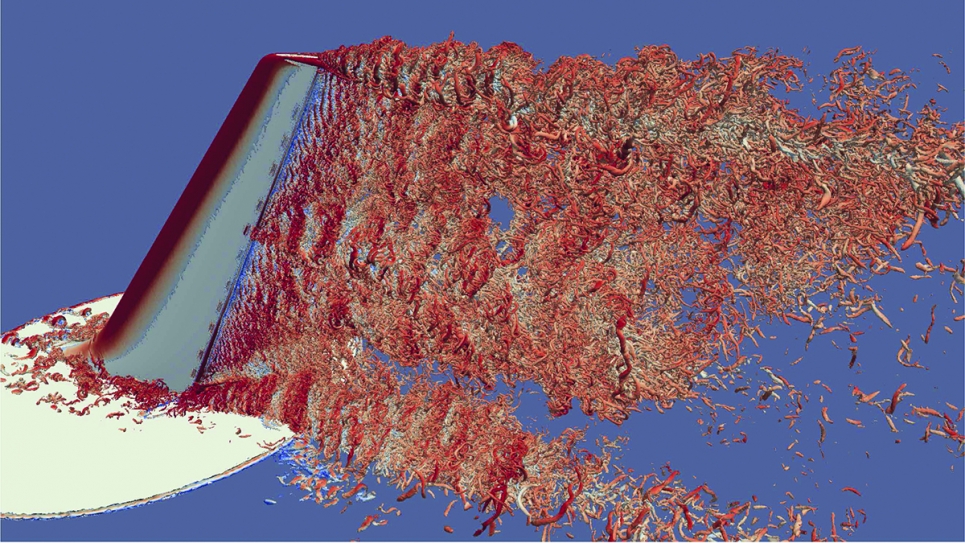
ALCF supercomputers enable groundbreaking research in 2018
The Argonne Leadership Computing Facility (ALCF), a U.S. Department of Energy (DOE) Office of Science User Facility, had another fruitful year. ALCF users employed complex simulations, data science techniques, and machine learning to accelerate discoveries across scientific disciplines.
The ALCF publishes a Science Report annually to highlight its user community’s noteworthy accomplishments. As 2019 approaches, we take a look back at some of the remarkable advances ALCF supercomputing resources enabled this past year.
Shedding light on massive stars
A team of researchers from the University of California, Santa Barbara used ALCF-generated simulations to study the global structure of the gaseous outer layers of massive stars. Their results were published in Nature.
Led by Lars Bildsten, University of California, Santa Barbara
Creating atomically thin nano-fabrics
Researchers from Cornell University and the University of Chicago demonstrated that it is possible to fuse materials, atom by atom, for the production of flawless, atomic-scale fabrics. These nano-fabrics have exhibited extraordinary properties, including excellent conductivity and high-efficiency light-emitting diodes. Results were published in Science.
Led by Robert DiStasio, Cornell University
Large-scale flight simulations to improve aircraft design
A team of researchers led by the University of Colorado Boulder advanced computational modeling capabilities to provide deeper insight into the problems posed by fluid flow and how their resolution can lead to refined aircraft design.
Led by Kenneth Jansen, University of Colorado Boulder
Greater insights into fusion as an energy source
University of Rochester researchers studied, via simulation, how ablation (mass evaporation due to a heat source) affects Rayleigh-Taylor Instability, a ubiquitous phenomenon that occurs when a heavy fluid is accelerated against a light fluid and presents a major obstacle to realizing inertial confinement fusion as an energy source. Results were published in Physical Review E and Physical Review Letters.
Led by Hussein Aluie, University of Rochester
Enhanced climate models
A multi-institutional research team continued their use of DOE leadership computing resources, including the ALCF’s Theta system, to develop the Energy Exascale Earth System Model (E3SM), a cutting-edge climate and earth system that is capable of tackling the most demanding climate research imperatives.
Led by Mark Taylor, Sandia National Laboratories
Identification and fabrication of materials for solar-powered windows
Researchers from the University of Cambridge and Argonne National Laboratory exploited large-scale data mining with machine learning to discover more effective light-absorbing molecules with which dye-sensitized solar cells can be constructed. Results were published in Advanced Energy Materials.
Led by Jacqueline Cole, University of Cambridge and Argonne National Laboratory
Improved peptide drug prediction
Researchers from the University of Washington advanced protein structure modeling capabilities to enable the design of novel chains of amino acids for the treatment of a host of diseases and medical conditions, with the potential to significantly reduce the costs associated with drug design and discovery research. The team published results in Nature and Journal of Computational Chemistry.
Led by David Baker, University of Washington
Investigation of a low-octane fuel to power more efficient engines
A team of researchers from Argonne National Laboratory and Aramco Research Center – Detroit advanced the design of a heavy-duty diesel engine using a gasoline-like fuel for improved efficiency and performance. The team’s research was featured in Computing in Science and Engineering.
Led by Sibendu Som, Argonne National Laboratory
Optimizing workflow execution for supercomputers
ALCF researchers developed Balsam to serve as a workflow management tool that simplifies the task of running large-scale job campaigns on supercomputers for production science, diminishing the burden on facility users and opening opportunities for optimizing how their jobs are submitted and executed. The team presented a paper on Balsam at SC18.
Led by Thomas Uram, Taylor Childers, and Misha Salim, Argonne National Laboratory
Predictions of functional materials
A research team led by Oak Ridge National Laboratory used simulations to study the remarkable properties of the substance graphene, a material that stands to revolutionize an array of applications through the creation of faster transistors and electronic components.
Led by Paul Kent, Oak Ridge National Laboratory
For more details on these projects and many others, view the ALCF’s 2018 Science Report here.
Argonne National Laboratory seeks solutions to pressing national problems in science and technology. The nation’s first national laboratory, Argonne conducts leading-edge basic and applied scientific research in virtually every scientific discipline. Argonne researchers work closely with researchers from hundreds of companies, universities, and federal, state and municipal agencies to help them solve their specific problems, advance America’s scientific leadership and prepare the nation for a better future. With employees from more than 60 nations, Argonne is managed by UChicago Argonne, LLC for the U.S. Department of Energy’s Office of Science.
The U.S. Department of Energy’s Office of Science is the single largest supporter of basic research in the physical sciences in the United States and is working to address some of the most pressing challenges of our time. For more information, visit the Office of Science website.

